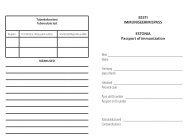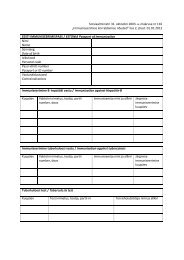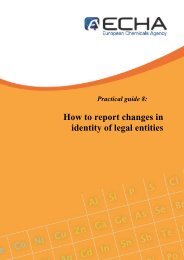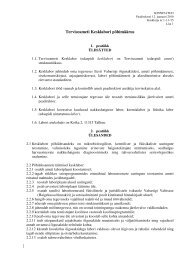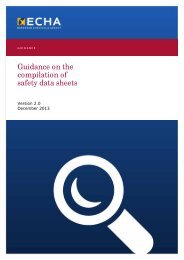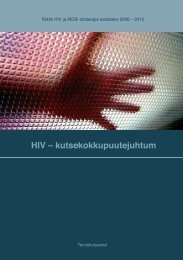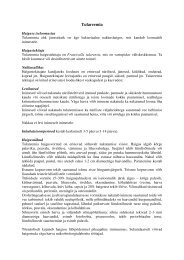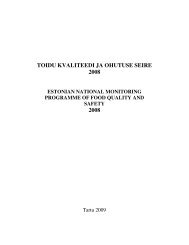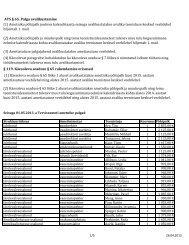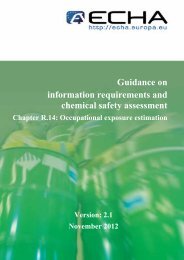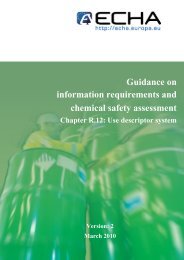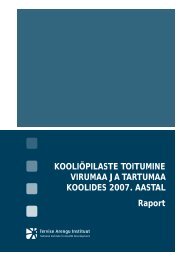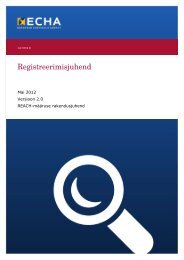Guidance for monomers and polymers - ECHA - Europa
Guidance for monomers and polymers - ECHA - Europa
Guidance for monomers and polymers - ECHA - Europa
Create successful ePaper yourself
Turn your PDF publications into a flip-book with our unique Google optimized e-Paper software.
8<br />
<strong>Guidance</strong> <strong>for</strong> <strong>monomers</strong> <strong>and</strong> <strong>polymers</strong><br />
Version 2.0 April 2012<br />
1. INTRODUCTION<br />
Polymers are the material of choice in a vast range of applications such as packaging, building<br />
<strong>and</strong> construction, transportation, electrical <strong>and</strong> electronic equipment, agriculture, as well as in<br />
the medical <strong>and</strong> the sports sectors. The versatility of polymeric materials is due to the fact that<br />
the physico-chemical properties of <strong>polymers</strong> can be tailored by a careful adjustment of the<br />
composition <strong>and</strong> molecular weight distribution of the molecules constituting the polymer.<br />
Owing to the potentially extensive number of different polymer substances on the market, <strong>and</strong><br />
since polymer molecules are generally regarded as representing a low concern due to their<br />
high molecular weight, this group of substances is exempted from registration <strong>and</strong> evaluation<br />
under REACH. Polymers may however still be subject to authorisation <strong>and</strong> restriction.<br />
Nonetheless, manufacturers <strong>and</strong> importers of <strong>polymers</strong> may still be required to register the<br />
<strong>monomers</strong> or other substances used as building blocks of the polymer, as these molecules are<br />
generally recognised as of higher concern than the polymer molecule itself.<br />
2. Definitions<br />
2.1 Monomer<br />
REACH defines a monomer as a substance which is capable of <strong>for</strong>ming covalent bonds with a<br />
sequence of additional like or unlike molecules under the conditions of the relevant polymer<strong>for</strong>ming<br />
reaction used <strong>for</strong> the particular process (Article 3(6)). In other words, it is a substance<br />
which, via the polymerisation reaction, is converted into a repeating unit of the polymer<br />
sequence. Substances exclusively involved in the catalysis, initiation or termination of the<br />
polymer reaction are not <strong>monomers</strong>. Any substance used as a monomer in the manufacturing<br />
of a polymer is there<strong>for</strong>e by definition an intermediate. Nonetheless, the specific provisions <strong>for</strong><br />
the registration of intermediates under REACH do not apply to <strong>monomers</strong>.<br />
For applications outside the scope of polymerisation, the same substance is not regarded as a<br />
monomer. If it is used as an intermediate, it may fulfil the conditions to benefit from the<br />
specific provisions <strong>for</strong> the registration of intermediates under REACH (see the <strong>Guidance</strong> <strong>for</strong><br />
intermediates 2 ). Otherwise, it will have to comply with all REACH requirements <strong>for</strong> a “normal<br />
substance” including registration requirements in accordance with Title II (see the <strong>Guidance</strong> on<br />
registration).<br />
2 All the <strong>ECHA</strong> <strong>Guidance</strong> Documents are available on the <strong>ECHA</strong> <strong>Guidance</strong> web page, in “support” section at:<br />
http://echa.europa.eu/web/guest/guidance-documents/guidance-on-reach.<br />
Annankatu 18, P.O. Box 400, FI-00121 Helsinki, Finl<strong>and</strong> | Tel. +358 9 686180 | Fax +358 9 68618210 | echa.europa.eu



